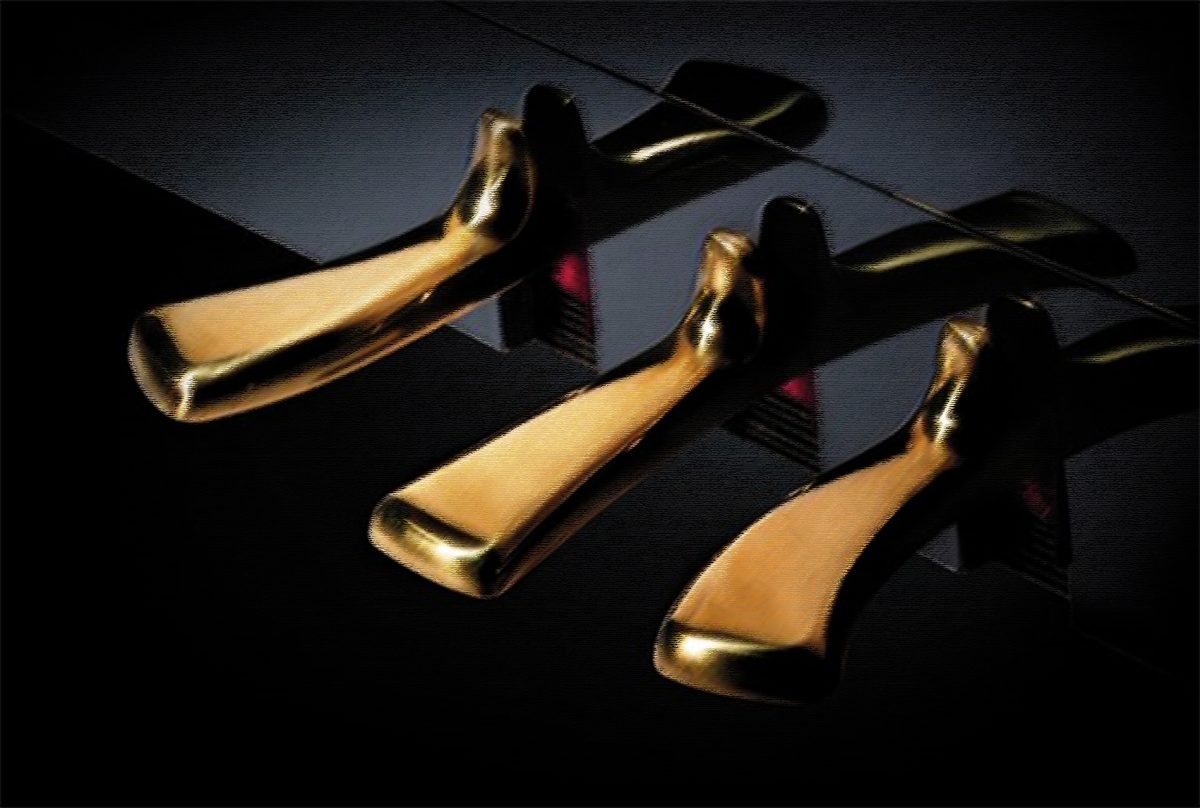Pianos come with pedals that are used to create various sounds and effects while playing. Understanding how these pedals work can help you make the most of your piano playing experience. In this post, we’ll explain the three pedals on an upright piano, and then move on to the pedals on a grand piano.
Upright piano pedals
Sustain pedal (right pedal)
The most commonly used pedal on a piano, the sustain pedal is located on the right side. When pressed down, it lifts all the dampers from the strings, allowing them to vibrate freely and sustain their sound after the keys are released. This creates a fuller, richer sound and allows notes to blend together smoothly. The sustain pedal is especially useful for creating a legato (smooth and connected) effect when playing multiple notes or chords.
Soft pedal (left pedal)
On upright pianos, the left pedal is a soft pedal, but it typically moves all of the hammers to rest closer to the strings so that they don’t have as much distance to accelerate, This creates a softer, quieter sound and is useful for creating a more delicate or intimate mood in a piece of music.
Practice pedal (centre pedal)
The practice pedal is sometimes called the ‘mute’ pedal because it reduces the volume of the sound produced by the piano. When pressed down, a piece of felt or rubber is placed between the hammers and the strings, reducing the volume of the sound. This is useful for practicing quietly without disturbing others around you.
Grand piano pedals
Sustain pedal (right pedal)
Like on the upright piano, the sustain pedal on a grand piano is located on the right side. When pressed down, it lifts all the dampers from the strings, allowing them to vibrate freely and sustain their sound after the keys are released. The difference is that on a grand piano, the sustain pedal can be pressed down partially, creating a ‘half-pedal’ effect that sustains some notes while allowing others to be played staccato (short and detached).
Una Corda Pedal (left pedal)
The left pedal on a grand piano is called the una corda pedal. When pressed down, the entire keyboard is shifted slightly to the right, so that the hammers strike only one of the three strings per note. This creates a softer, quieter sound and is useful for creating a more delicate or intimate mood in a piece of music.
Sostenuto pedal (centre pedal)
The sostenuto pedal on a grand piano is located in the middle. When pressed down, it sustains only the notes that are being held down at the moment the pedal is pressed. This allows specific notes to sustain while other notes played afterwards are not affected, and is useful for creating a sustained effect on certain notes while allowing others to be played staccato.
In conclusion, understanding the pedals on your piano is important for making the most of your playing experience. Whether you’re playing an upright or grand piano, each pedal has its own unique function that can be used to create a variety of sounds and effects. By experimenting with these pedals, you can unlock the full potential of your instrument and take your playing to the next level.
